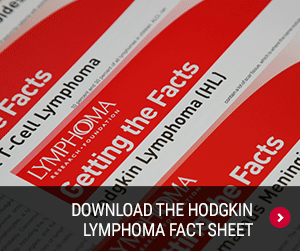
What is Lymphoma?
Hodgkin Lymphoma: Diagnosis
Common signs and symptoms of Hodgkin lymphoma include swelling of the lymph nodes, fever, night sweats, unexplained weight loss and lack of energy. An accurate assessment for Hodgkin lymphoma requires a number of diagnostic tests conducted by a physician.
To be sure of a diagnosis of HL or any cancer, a biopsy is required. An excisional biopsy to remove an entire lymph node is preferred in helping to diagnose HL. Sometimes, however, a core needle or an incisional biopsy to remove a portion of the tissue is performed. A pathologist examines slides containing portions from the biopsy sample under a microscope to see if they contain the characteristic cells of HL (ReedSternberg [RS]) and to see if the cells are arranged in ways typical of HL.
The following tests may be used to confirm the HL diagnosis:
- Bone marrow biopsy and/or bone marrow aspiration for advanced stage HL
- Complete blood count (CBC) with differential
- Comprehensive metabolic panel to check liver and kidney function
- Pathology examination of the lymph node biopsy (a detailed review of the biopsy by a pathologist or hematopathologist)
- Testing for human immunodeficiency virus (HIV) and the hepatitis B and C virus infections
- Positron emission tomography (PET) and computed tomography (CT)
Patients diagnosed with HL will be asked to undergo a variety of procedures for the initial diagnosis and work-up before treatment begins, during the course of treatment, and during the follow-up period. Before patients agree to a procedure, they should make sure they understand the reasons for the procedure and what will be involved. All of the information gained from these tests will help the patient’s healthcare team determine the best course of treatment.
To learn more about the diagnosis of HL, download the Hodgkin Lymphoma Booklet.


